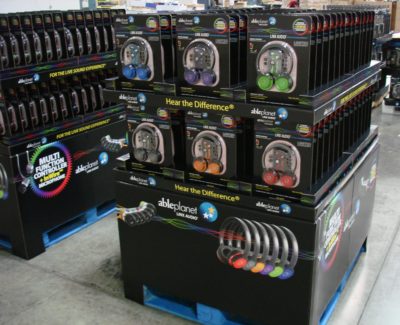 Merchandising occupies a primary place of consideration for retailers seeking to maximize sales and profitability, making POP display an excellent solution for packaging your product going into big-box stores or any retail space.
Merchandising occupies a primary place of consideration for retailers seeking to maximize sales and profitability, making POP display an excellent solution for packaging your product going into big-box stores or any retail space.
Placement concerns must be balanced with available square footage and consumer behavior. It isn’t always what is on display that drives sales, but sometimes how it is displayed. Seasoned retail professionals will attest to this; moving products and changing display strategies is often all it takes to increase sales.
Individual unit packaging is an essential factor influencing the number of units sold, but it is only the first step in presenting consumer goods attractively. How items are grouped and where they are placed significantly impacts the bottom line, rendering point-of-purchase display assemblies a valuable sales tool for retailers.
POP Display Parameters
Certain products lend themselves to specific types of displays. Therefore, essential determinations must be made before moving forward with point-of-purchase decisions, and there are many POP display examples to help provide inspiration.
- Where an item will be sold has a great deal of impact on the type of POP display that is appropriate. Home improvement and convenience stores have very different merchandising requirements; no one-size-fits-all point-of-purchase displays exist.
- Size matters in retailing, where floor space is always at a premium. The size of individual units feeds the need to a certain extent, but sometimes retailers work the equation in reverse, utilizing available space to accommodate the product. Custom POP displays are paramount here.
- The number of units in a display helps determine its size and configuration. The stalwart retail adage: “Stack ’em high, and watch ’em fly,” was not conceived of clever conjecture but rather from empirical evidence that supports the theory. Sometimes a bigger stack is better. On the other hand, limited numbers of items displayed at once create an exclusive air around a product that drives sales forward. The number of facings and sides “shopped” on a POP display can drastically impact your sales success.
- Cross-marketing is achieved through effective point-of-purchase exhibits that contain multiple SKUs. By placing similar or related items proximate to one another, retailers create add-on sales by tapping consumers’ tendency to buy multiple items within category groupings. Custom POP display assemblies allow manufacturers and wholesalers to add value to their products by grouping them for retail placement.
- Some display units utilize single faces that can only be shopped from one side. For example, POP assemblies that stand against walls are commonly single-sided. On the other hand, merchandising islands that stand alone in open areas provide multiple faces for shoppers to peruse. Again, high-volume applications shine here because more than one browser at a time can utilize the display without feeling constricted.
POP Display Suitability
Once general parameters have been contemplated, specific POP assemblies can be studied for suitability.
- Counter displays are perfect for small items in the impulse purchase category. For example, a POP assembly containing 40-cent gourmet chocolates can profoundly impact the long-term bottom line — even when only a small percentage of shoppers buy one.
- Dump bins are effective volume merchandising tools for small everyday items. Health and beauty aids in travel sizes are a perfect example of things well-placed in box-shaped dump bins.
- Gravity displays provide specialized presentation vehicles that efficiently keep products within reach for customers. In addition, the tubular packaging used for products like lip balm naturally facilitates gravity-fed POP display assemblies.
- Floor displays can be configured in endless ways, precisely accommodating your customers’ retail requirements.
- Power wing and sidekick displays allow end-of-the-aisle positioning utilizing clips to hold the merchandising display at eye level. These are very popular in Walmart, Auto Accessory retailers, Meijer, Kohls, Costco, Sam’s Club, and many others.
- Utilizing POP assemblies creates added value for manufacturers and wholesalers by taking display concerns out of the hands of retailers. Instead, contract packaging companies make custom units that arrive at stores retail-ready.
Point-of-purchase display solutions are at your fingertips when you consult the right packaging company, and Assemblies Unlimited is your go-to source for any packaging project. Feel free to request a quote or call us to speak with a sales packaging specialist.
